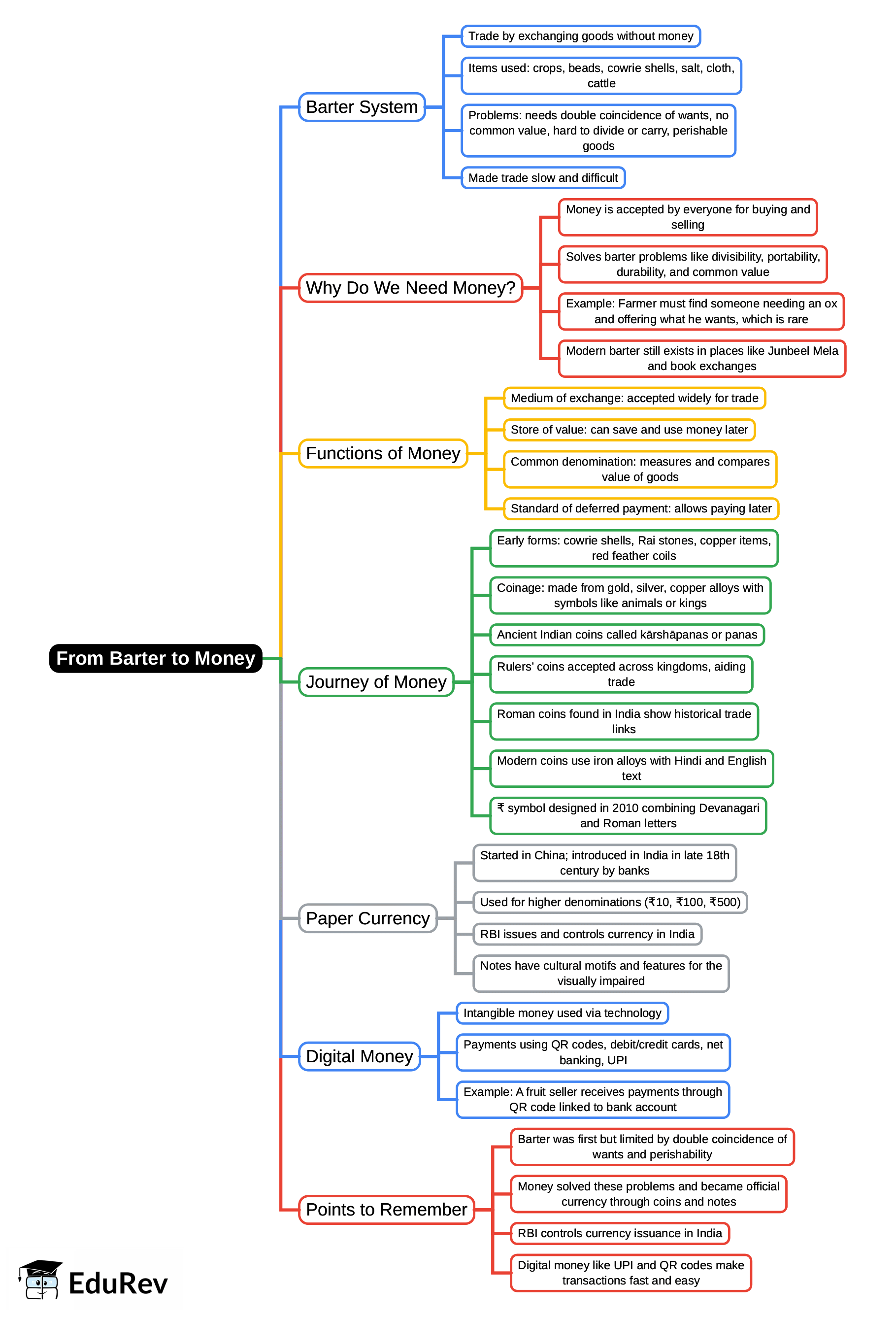Class 7 Exam > Class 7 Notes > Subject-Wise Mind Maps for Class 7 > Mind Map: From Barter to Money
Class 7 Social Science Chapter 11 Mindmap - From Barter to Money

The document Class 7 Social Science Chapter 11 Mindmap - From Barter to Money is a part of the Class 7 Course Subject-Wise Mind Maps for Class 7.
All you need of Class 7 at this link: Class 7
FAQs on Class 7 Social Science Chapter 11 Mindmap - From Barter to Money
| 1. What is barter, and how does it function in trade? |  |
Ans.Barter is the direct exchange of goods and services without using money. In a barter system, individuals trade items they have for items they need. For example, a farmer might exchange a bushel of apples for a pair of shoes from a shoemaker. This system relies on the mutual agreement of both parties on the value of the items being exchanged.
| 2. Why did societies move from barter to money? |  |
Ans.Societies transitioned from barter to money to address the limitations of the barter system. Barter requires a double coincidence of wants, meaning both parties must want what the other is offering. Money simplifies transactions by providing a common medium of exchange, making trade more efficient and allowing for the storage of value over time.
| 3. What are the different forms of money that have been used throughout history? |  |
Ans.Throughout history, various forms of money have been used, including commodity money (like gold, silver, or salt), representative money (like paper notes that represent a commodity), and fiat money (currency that has value because a government maintains it and people have faith in its worth). Each form has evolved to meet the needs of societies at different times.
| 4. How does money facilitate trade in modern economies? |  |
Ans.Money facilitates trade in modern economies by serving as a universally accepted medium of exchange, a unit of account, and a store of value. It allows people to buy and sell goods and services without the complications of barter. Money also enables pricing, savings, and investments, contributing to economic growth and development.
| 5. What role does banking play in the modern monetary system? |  |
Ans.Banking plays a crucial role in the modern monetary system by providing services such as accepting deposits, offering loans, and facilitating transactions. Banks help to manage the money supply and provide credit to individuals and businesses, which stimulates economic activity. They also help people save and invest their money safely.
Related Searches





















